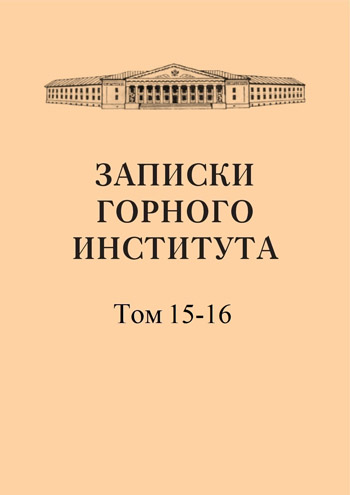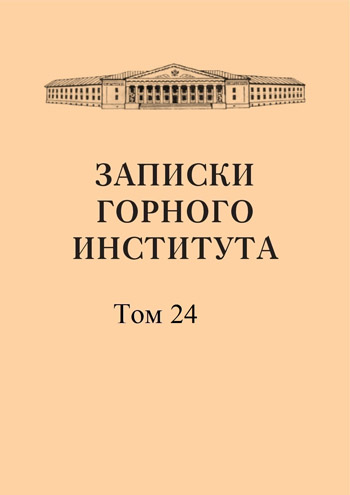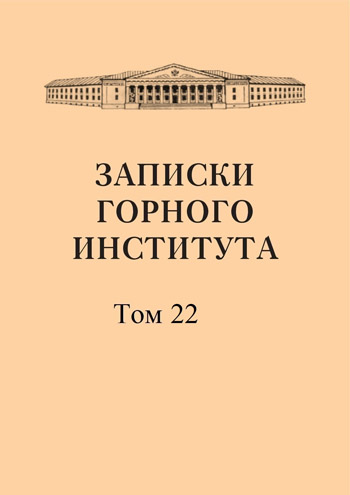-
Date submitted1949-06-15
-
Date accepted1949-08-28
-
Date published1949-03-31
Aerial polygonometry and leveling using reference planes
- Authors:
- N. G. Kell
In existing methods, the plane of the first image of the route is usually taken as the conditional horizontal plane. In this case, it is necessary to take into account the difference in flight altitude in the formulas expressing the distance. It seems simpler to us to take as a conditional horizontal plane the plane passing through the basis and the line of intersection of the planes of a stereoscopic pair of adjacent plan planes. aerial photographs of one route. We call this reference plane the distance plane. The direction of the distances in each pair is slightly different from the vertical direction, since the difference in flight altitudes is small and the photographs are planned with a small angle of inclination. The lines of intersection of the planes of the images of a given pair with the distance plane will be parallel to each other and form straight lines of zero distortion of both images in relation to the distance plane.
-
Date submitted1949-06-21
-
Date accepted1949-08-19
-
Date published1949-03-31
From the history of Russian geology of the second half of the 19th century. (to the 50th anniversary of the death of N.A. Golovkinsky and the 80th anniversary of his theory)
- Authors:
- G. I. Sokratov
In Russia, due to the peculiarities of its historical development, in the second half of the last century, a large group of major figures in science and art emerged. The talented geologist Nikolai Alekseevich Golovkinsky belongs to the glorious galaxy of advanced scientists of this time. Having established for the first time a concrete connection between the oscillatory movements of the earth’s surface and the process of formation of the sedimentary shell of the earth's crust, he was in this regard a successor of the ideas of the brilliant Lomonosov. He gave the first in the history of geology a thoroughly developed scheme for the formation of a layered structure based on the movement of facies in connection with the movement of the coastline. N.A. Golovkinsky was the first to give a clear scheme for the formation of a layered structure and introduced the most important concepts about geological horizons (petrographic or lithological, chronological, stratigraphic and paleontological); he expanded the concept of facies and with all this laid the foundation for the correct understanding and solution of issues of stratigraphic parallelization and geological synchronization. The principles of terrace formation (valley formation) formulated by him, which underlie modern geomorphological concepts, are very profound. N.A. Golovkinsky is the immediate predecessor of A.P. Karpinsky in questions about oscillatory movements. A list of scientific works by N.A. Golovkinsky is provided.
-
Date submitted1949-07-12
-
Date accepted1949-09-11
-
Date published1949-03-31
On the nature of flotation interaction between oleic acid and wolframite
- Authors:
- D. S. Emelianov
One of the main issues in the theory of flotation is the nature of the interaction of the collector reagent with the surface of the floated mineral. It has been established that during the flotation of wolframite and hübnerite in a sodium oleate solution, the pH of the pulp does not increase, but decreases. It has been suggested that as a result of the binding of more and more portions of fatty acid to the surface of the mineral in one solution of sodium oleate, the accumulation of not NaOH, but Na₂W0₄ occurs, which explains the decrease in pH. It has been suggested that the surface of the mineral extracts the fatty acid acyl ion from solution as a result of an exchange reaction between the acid or its soap and the surface of the mineral. Around the monomolecular layer of metallic soap, formed as a result of a chemical reaction on the surface of the mineral, a polymolecular film of undissociated oleic acid is formed, which causes flocculation of wolframite or hübnerite. In the flotation of pure minerals - wolframite and hübnerite - flocculation is a very significant reason for the success of flotation. Flotation of hübnerite with sodium oleate is less successful in comparison with flotation with oleic acid, which should be explained by the different flocculating ability of these reagents.
-
Date submitted1949-06-20
-
Date accepted1949-08-27
-
Date published1949-03-31
On the motion of a material point in a given force field along a helix on a rough surface
- Authors:
- M. I. Akimov
- N. R. Malkin
This question for the case of a homogeneous field—the gravity field—was discussed in detail by Prof. M.I. Akimov, who found all surfaces that allow the movement of a heavy point along helical lines with a vertical axis in the presence of friction, and investigated the conditions for these surfaces under which the movement in question would be stable.
-
Date submitted1949-06-28
-
Date accepted1949-08-23
-
Date published1949-03-31
Electrical equipment for mine fan installations
- Authors:
- F. N. Shklyarskii
The author examines in detail 1) centrifugal fans: fan drive systems, fan control of electric drive units; 2) axial fans, fan drive systems and electric drive control of fan units.
-
Date submitted1949-07-06
-
Date accepted1949-09-10
-
Date published1949-03-31
About the so-called Walter's law in the formation of layered sedimentary deposits and its Russian prehistory
- Authors:
- G. I. Sokratov
В истории науки известен ряд примеров, когда важнейшие научные достижения русских ученых не получали достаточной известности и значительно позже первенство в них приписывалось иностранцам. Весьма характерным в этом отношении является положение, которое мы сейчас имеем в геологии с одним весьма важным принципом, лежащим в основе правильного понимания формирования слоистых осадочных толщ и причин их важнейшего свойства — слоистости. Этот принцип получил широкую известность в геологической литературе в виде так называемого закона Вальтера. Не собираясь отрицать большого значения работ И. Вальтера в разработке вопросов слоистости и фаций, а также интересных представлений о миграции и изменении фауны в зависимости от последних, мы считаем необходимым на основании наших специальных исследований отметить, что эти основные положения, получившие наименование закона Вальтера, отнюдь не И. Вальтером впервые были установлены. Первенство их установления и разработки принадлежит одному из оригинальных и талантливых русских геологов — Н. А. Головкинскому. Н. А. Головкинский и А. А. Иностранцев являются создателями двух противоположных концепций в теории формирования слоистой структуры. Существо этих концепций сохраняется и во всех современных представлениях, определяя развитие взглядов на образование слоистой структуры. Это развитие совершается в борьбе двух указанных концепций и ведет к разработке единой теории этого сложного процесса, в основе которой выступает концепция Н. А. Головкинского.
-
Date submitted1949-06-26
-
Date accepted1949-09-11
-
Date published1949-03-31
Enrichment of Baltic oil shale
- Authors:
- A. K. Korolkov
Baltic oil shale has long been recognized as a raw material for the chemical and gas industries and as an energy fuel. In this regard, the issues of exploitation of shale deposits and the enrichment of extracted shale are becoming important. The beneficiation of shale, which began simultaneously with their extraction, from the very beginning to the present day is carried out in all mines by manual selection of rock (limestone). The use of mechanical (non-manual) enrichment of oil shale is unknown. The question of mechanical enrichment of oil shale arose by analogy with coal and in connection with the sharply increasing scale of its production. Of the mechanical enrichment processes, hydrogravity is the most studied. For a number of reasons, aerogravity and flotation are less studied. The materials obtained as a result of all the studies make it possible to evaluate the Baltic oil shale as an object of enrichment and to identify approximate indicators of their enrichment. This work aims to summarize the materials accumulated over the past 20-25 years on the beneficiation of oil shale in the Baltic states and outline a number of conclusions that follow from them.
-
Date submitted1949-06-23
-
Date accepted1949-09-08
-
Date published1949-03-31
Pressure-processed, lightweight, high-strength aluminum alloys
- Authors:
- N. N. Ivanov-Skoblikov
One of the most pressing problems of modern technology is lightening the weight of metal products. This problem is solved by using light, durable aluminum-based alloys and replacing them, wherever possible, with heavy copper, nickel and iron alloys. It is known from practice that two ways have emerged to lighten the weight of products and structures. The first way is the use of light alloys with fairly high strength values and corrosion resistance; the second way is the use of heavy high-quality steels, which, due to their high strength, make it possible to produce products with a lightweight cross-section. With the progress of modern metallurgy, it becomes clear to designers that simple carbon steel is no longer the only structural material. Alloys based on aluminum and special steels appeared.


